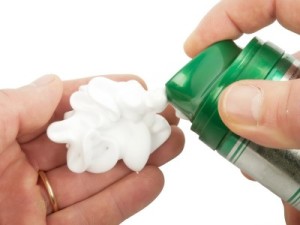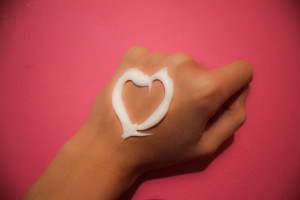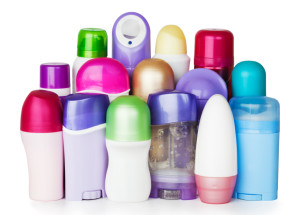
Start Your Own Empire
Manufacturing Cosmetics, Makeup, HairCare,
Sanitizers & Detergents
How To Make Shaving Products ... Start your Own Business
The market for male grooming aids is booming.
From shaving products to hair care and skin care, men are more concerned about their appearance than ever before. And savvy business owners are capitilizing on this trend – barber shops are now producing their own brands of in-demand niche grooming products.
Discover how to start your own business making cosmetic and personal care products for men.
Shaving preparations
A wide range of preparations are now available which prepare the beard or face for shaving. These preparations increase speed and comfort during and after the shave. Shaving preparations can been divided into three types: Wet-shaving, Dry-shaving and After-shave.
Wet shaving preparations
Wet shaving preparations are designed to soften the beard, to lubricate the passage of the razor over the face and to support the beard hair. The preparation should be non-irritating, assist in removing shaving debris from the face, should be stable over a range of temperatures, resistant to rapid drying out and collapse, non-corrosive to the razor blade and easily rinsed from the razor and face. There is good evidence for the hair softening and lubrication functions of the shaving preparation, but little has been reported on the hair supportive role.
Lather shaving cream
Criteria for a good lather shaving cream.
Reasons for successful shaving preparations are economic use, supply of water to beard, and maintaining the hair in fully water-saturated condition. The requirements of a good lather shaving are: it must produce rich copious lather, composed of small bubbles, non-irritant, good wetting properties, smooth, soft, adhere readily and retain texture at all temperatures. The following points evaluate shaving preparations.
1. Ease of transfer to and spreading on the face.
2. Wetting and drainage properties of stone.
3. Comfort and closeness of shade.
4. Fine texture, rigidity, rheology and stability.
5. Easy removal of the other shaving debris from the razor.
6. Acceptability of perfume and life of razor blade.
Formulation
Lather shaving creams are concentrated dispersions of alkali metal soaps in glycerol and water. To maintain the desired level of foamability, consistency and product stability, careful control of the manufacturing process is essential. Even the slightest change to the formulations or manufacturing procedure can result in phase separation of the cream slightly elevated temperatures.
Lather shaving creams normally contain 30 – 50% soaps. To produce voluminous lather, it is usual to add some coconut oil fatty acids or stearic acid. The satisfactory ratio of stearic acid to coconut oil is 75:25. A mixture of sodium and potassium hydroxides is used to saponify the fatty acids. It has been suggested that the 5:1 ratio of potassium hydroxide to sodium hydroxide with 3-5% free fatty acids will give shaving creams the correct degree of plasticity. A cream containing a high level of sodium soaps tends to be thick and stringy, from which it is often difficult to produce a good lather. Lather creams can be made with potassium soaps alone, but these tend to be less stable.
 Lather Shaving Stick
Lather Shaving Stick
A lather shaving stick can be prepared from a mixture containing 80% fat fatty acid soaps, 5-10% glycerol and 8-10% water. The ratio of the fatty acids and the ratio of potassium to sodium soaps should be similar to those described under lather shaving creams. After mixing, the composition is chipped, dried and milled with perfume, colour or ao pacifier. The soap flakes are packed to the desired shape using a soap plodder.
 Aerosol shaving foams
Aerosol shaving foams
Aerosol shaving foams are oil-in-water emulsions in which propellant droplets, liquefied under pressure, form a substantial part of the oil phase. When the emulsion is discharged to the atmosphere, the disbursed propellant droplets vaporize, producing a foam consisting of propellant vapor bubbles surrounded by an aqueous surfactant phase.
Brushless or non-lathering cream
Brushless or non-lathering shaving creams are oil-in-water emulsions. They contain components similar to those in vanishing creams. The main difference being that the concentration of oils and emulsifying agents tends to be higher in the shaving preparations. Ideally, the cream should vanish on completion of the shave, leaving the face free from irritation and with a matte appearance. Since a too-rapid disappearance of the cream would be deletrious to the comfort and closeness of the shave, it should be possible at least to rub any remaining cream into the skin after the shave.
Brushless shaving Stick
Brushless shaving stick can be applied directly to the face. The continuous thin smear left on wetted skin provides adequate lubrication for the shaving operation. This stick is composed of fatty or waxy materials to which hydrophilic properties have been imparted by soap or a partial fatty acid ester of a polyhydric alcohol. This ensures that the product is readily wetted. It is not more sparingly soluble in water. Pigment, dye stuff or opacifier is incorporated to indicate the presence of the composition on the face.
Dry shaving preparations
It is generally recognized that electric shaver’s do not cut the beard as close to the skin surface as a razor blade. Both electric and bladed shaving result in the removal of skin, the amount removed for an individual being dependent on the pressure applied to the face. Generally, the closer the shave the greater the amount of skin damage. It has been suggested that pre-electric shave preparations may not increase the quality of the shave but may assist in reducing skin damage.
Lotions of the oily type and to deposit on the face a field of lubricant which reduces the drag of the cutting head against the skin. It has been shown that a field of silicone oil substantially reduces the frictional force between skin and a smooth steel probe.
Aftershave preparations
The purpose of an aftershave preparation is to relieve the slight irritation or “afterglow” and confer a feeling of comfort and well-being after shaving. This is achieved by giving a slight coolness, anaesthesia, mild astringency or emolliency to the skin. At the same time, the preparation should be antiseptic and help to keep the skin free from bacterial infection during the short time it takes to recover from the slight degree of injury inflicted during the shaving operation.
Aftershave lotion
An aftershave lotion is a clear aqueous ethyl alcohol solution containing a perfume. They contain 50 – 70% by weight ethyl alcohol. The controlled ratio of ethyl alcohol to water produces balanced mild astringency and coolness. Perfume or solubiliser is also used. Non-ionic surfactants with a hydrophile-lipophile balance (HBL) number in the range 15-18 are often found to be the most effective solubilisers, although anionic surfactants have also been used. Humectants and emollients are at levels not exceeding 5%. Polyols such as glycerol, sorbitol and propylene glycol help to maintain the water content of the skin. Glycerol has the best properties of the group, but propylene glycol is often preferred because of the greatest solvent power, lower viscosity and higher volatility. The feel of the skin can be improved by the addition of long-chain fatty esters, for example isopropyl myristate or lanolin. Quantities are often limited by their low solubility in aqueous alcoholic solutions. Water-soluble lanolin derivatives can be used at higher levels to provide emolliency and to assist in the solubilization of the perfume oil.
The level of menthol should be kept below 0.1% because of its lachrymatory properties and because it’s odour can upset the balance of the perfume. Odorless cooling agents may be appropriate for this type of product. Menthol is also said to cause surface anaesthesia to the skin; however, it is preferable to achieve this effect with lignocaine a level of 0.025 to 0.05%.
Some perfumes are unstable to ultraviolet light. Therefore after exposure to direct sunlight for a few months, an after shave lotion in glass bottles develops a characteristic “bottle odour”, quite unlike the original fragrance. Accelerated testing of ultraviolet light stability of the packaged product should be included in the evaluation of aftershave preparations. Many manufacturers circumvent the problem by using opaque or chromium-containing glass bottles to package the lotion.
After shave gel
An aqueous alcohol gel can be formed by neutralizing carboxy vinyl polymer with the base. The amount of gelling agent (usually less than 1%) and the degree of neutralization controls the stiffness of the gel. The gel may optionally contain a physiological agent and emollient which is soluble in the alcohol solution. It is prepared by dissolving perfume and menthol in alcohol and stirred in water to produce a clear solution.

Subscribe Now – Receive the lastest news & updates from AustraLab
You might also like ...

How To Make Deodorants & Anti-Perspirants
Start Your Own EmpireManufacturing Cosmetics, Makeup, HairCare,Sanitizers & Detergents How To Make Deodorants & Anti-Perspirants … Start your Own Business Click here to learn the

How to Make Hand Creams & Cleansers
Start Your Own EmpireManufacturing Cosmetics, Makeup, HairCare,Sanitizers & Detergents Making Hand Creams & Body Creams … Start your Own Business Click here to learn the

Bath Body Products & Private Label Cosmetics – A High Profit Cosmetic Manufacturing Combination
Start Your Own EmpireManufacturing Cosmetics, Makeup, HairCare,Sanitizers & Detergents Making Private Label Bath & Body Products … Start your Own Business Click here to learn

Deodorants Can Make You a Fortune
Start Your Own EmpireManufacturing Cosmetics, Makeup, HairCare,Sanitizers & Detergents Making Deodorants & Toiletries … Start Your Own Business Click here to learn the trade secrets

© 2020 AustraLab
